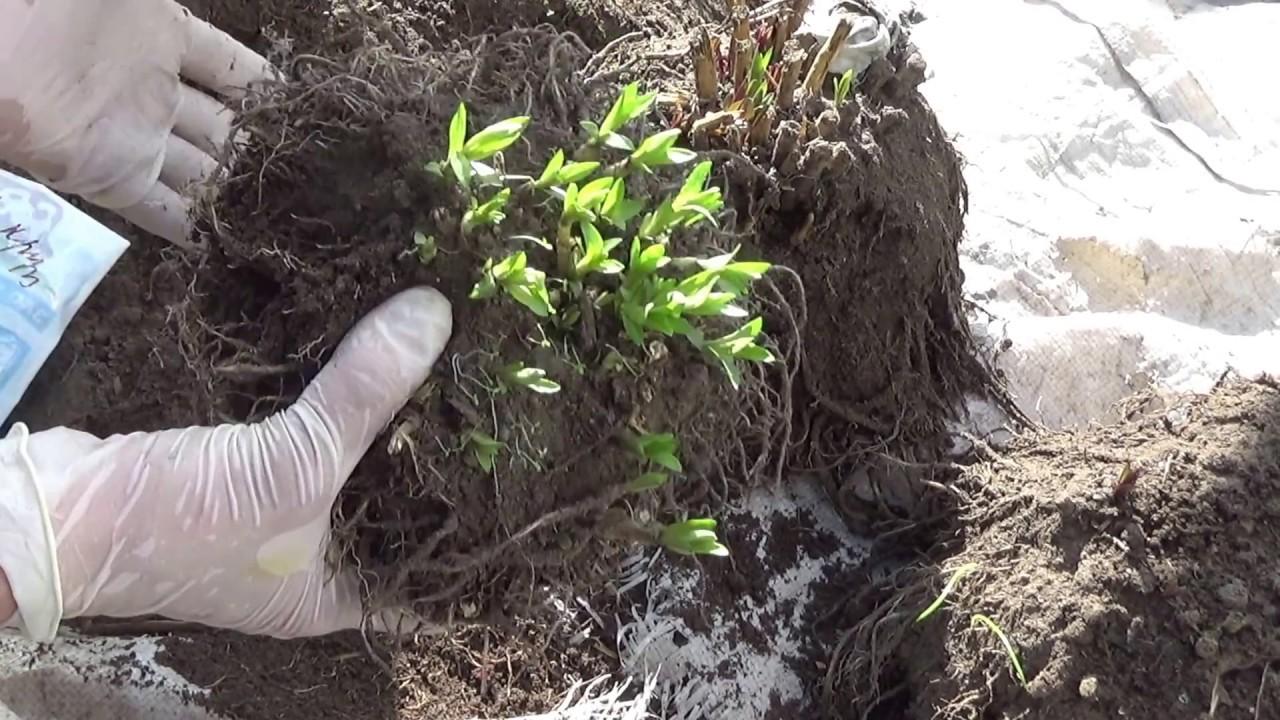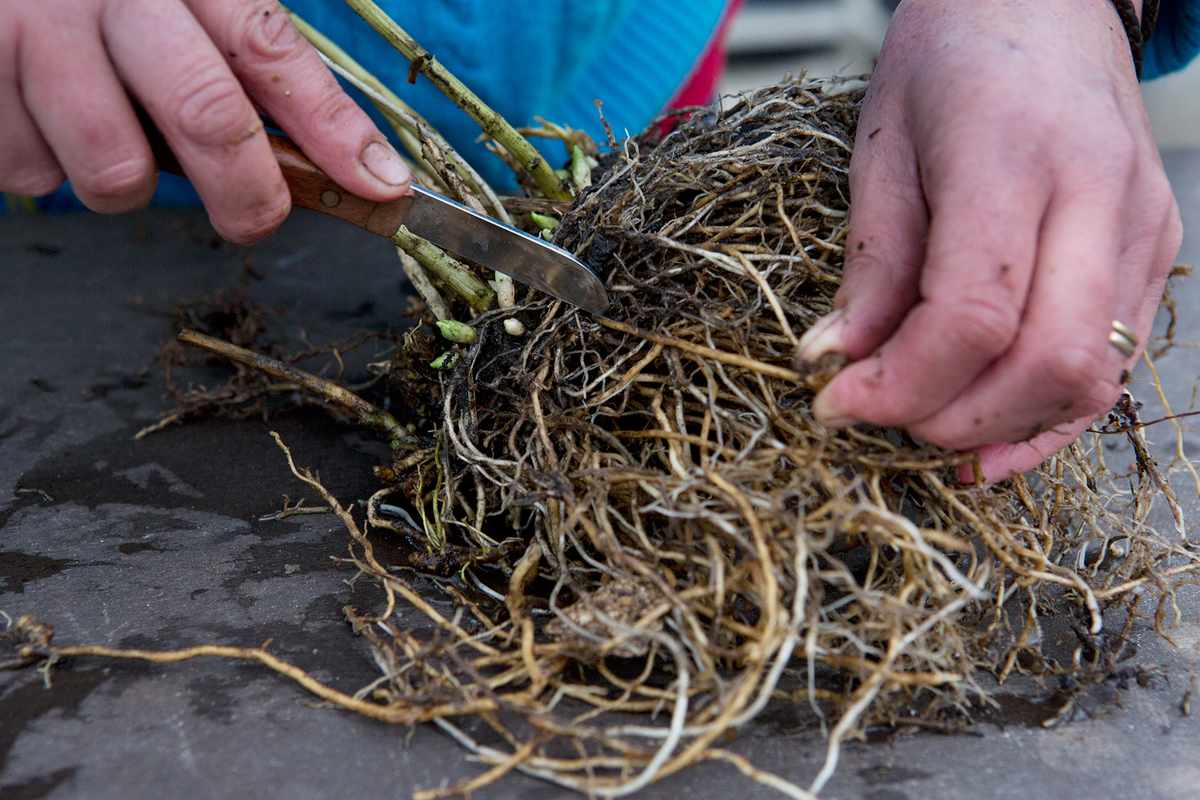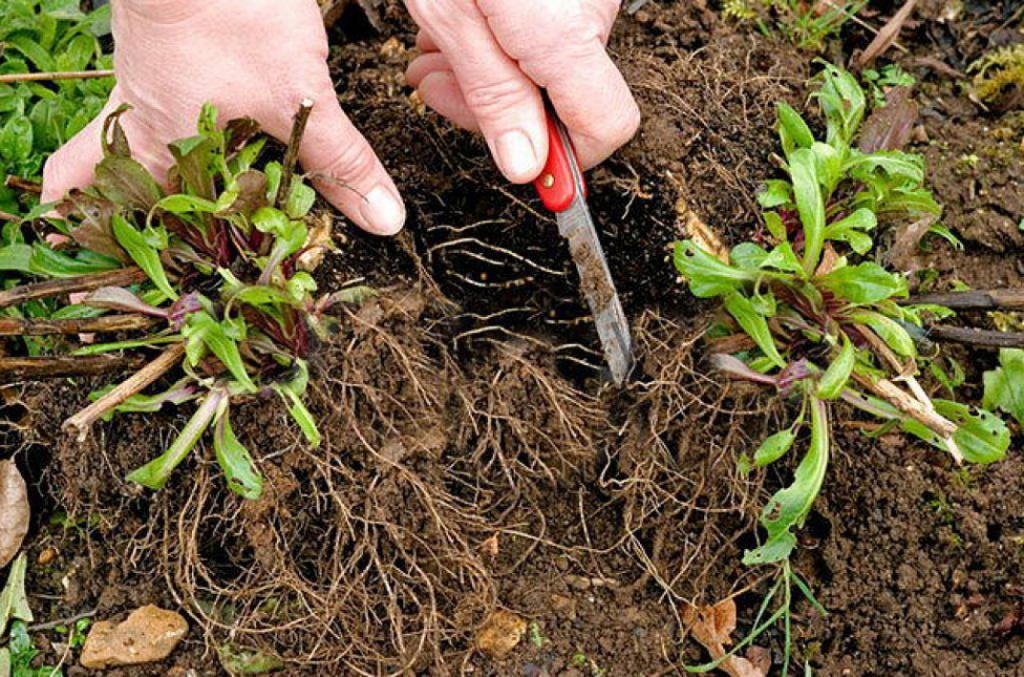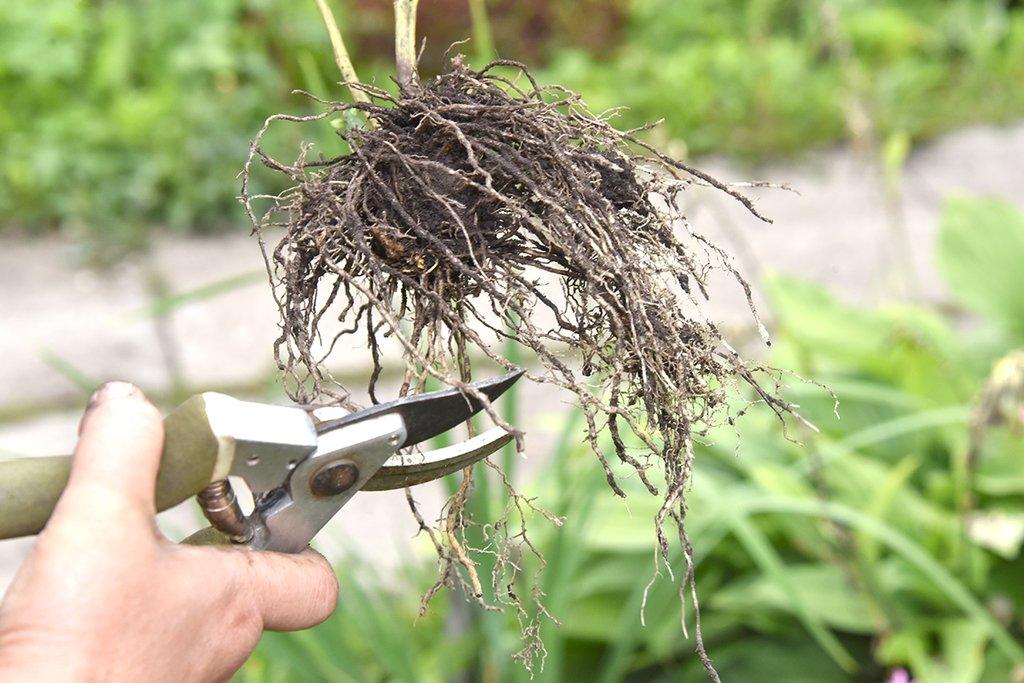Phlox are perennial plants that have an attractive appearance and do not require specific care. However, when growing crops, you should still follow certain rules. At the same time, many novice gardeners are interested in when it is better to replant phloxes, in spring or autumn, to another place. For the procedure to be successful, a number of rules must be strictly followed.
Reasons for transplant
When constantly grown in one area, phloxes begin to feel worse and worse.At the same time, their growth slows down, and the buds themselves lose their rich color and become paler and more inconspicuous. This is due to the gradual depletion of soil and the accumulation of harmful substances and pathogens in it, which negatively affect the health of crops. But when transplanted, the decorative properties of plants quickly improve.
It is also necessary to move flowers to a new area in the following situations:
- The need to free up space in the garden. The place where phlox grows may be required for planting other crops, construction, and communications.
- Weather disasters. As a result, the area with flowers may become flooded.
- Selling a house or garden, moving. At the same time, the person wants to keep the flowers for himself.
- Violation of growing conditions. For example, the phlox planting site has become shady or the groundwater has risen too much.
- The risk of parasites or the development of pathologies.
How often should this be done
Transplantation is considered an important stage in crop care. Phloxes are characterized by intense flowering. At the same time, they need a lot of nutrients. With constant growth of the bush in one place, there is a risk of reducing its decorative properties, reducing the size of the inflorescences, and weakening the bush. This may be due to the influence of the following factors:
- soil depletion;
- thickening of plantings;
- root growth;
- the occurrence of pathologies.
It is believed that phlox can grow in the same place for 10 years. However, this is the deadline during which complete degeneration of flowers occurs.It is best to move plants to a new site at intervals of 5-6 years. But sometimes the procedure is carried out every 4 years. In this matter, it is worth considering the condition of the flowers. If the soil is quite fertile and suitable for phlox, replanting can be done less frequently.
Best time to transplant
Gardeners do not have a common opinion regarding the timing of moving flowers to a new site. Experts note that this procedure can be carried out both in spring and autumn. It is important to take into account the climatic characteristics of specific regions.
For example, in areas where winter comes early, replanting should be done in the spring. If the procedure is carried out in the fall, the plant may not have time to adapt to new conditions. This will cause the death of the culture. If the climate is quite warm and winter comes late, transplantation can be carried out in the autumn season.
in spring
When transplanting phlox in spring, gardeners take into account not the calendar date, but the timing of the onset of real spring. It is recommended to carry out work after complete thawing of the soil. However, this must be done before the growing season begins. In central Russia, the procedure is performed at the end of April or at the beginning of May.
In summer
In summer, flowers are usually not replanted. Therefore, under normal circumstances, it is better not to carry out such a procedure. In emergency situations, it is better to schedule the procedure at the beginning of June. However, if necessary, the procedure is performed in other summer months. Typically, the need for a transplant occurs in the following cases:
- the need to rejuvenate the bush - this helps to increase its decorative properties and increase the flowering period;
- lack of nutrients in the soil - while it is not possible to compensate for this deficiency with fertilizers;
- infection of the soil by viruses and fungi, the presence of a large number of pests on the site;
- the need for redevelopment of space - flowers can interfere with construction work, so they need to be moved to a new location.
in autumn
It is recommended to transplant phloxes to a new site at the beginning of September or even at the end of August. In this case, the plants will have enough time to take root in a new place, adapt to the conditions and prepare for winter. If work is completed later, the likelihood of an unsuccessful outcome increases significantly. Therefore, phlox transplantation in October is allowed only in the southern regions.
Transplantation in different seasons
In order for the movement of phlox to a new location to be successful, it is important to strictly follow the rules for this procedure. In this case, it is necessary to take into account the seasonal factor.
Preparing a place for a seedling
It is recommended that the future planting site be cleared of weeds and dug up in advance. In this case, it is necessary to add granular mineral fertilizer or organic fertilizer - this can be manure or humus. When transplanting phlox into the soil in spring, it is recommended to apply nitrogen fertilizers. Urea, nitrophoska, and ammonium nitrate are perfect for this.
When replanting crops in the fall, nitrogen-based nutrients are not used, as this may cause the growth of young shoots. During this period, it is worth adding a small amount of potassium and phosphorus preparations to the soil. To improve soil parameters, it is useful to use wood ash. It is recommended to use 1 cup of fertilizer per 1 square meter.
Spring transplant
Phloxes need to be replanted from the beginning to the end of April. Under optimal weather conditions, you can do this in early May.At the same time, it is important that the snow melts and the earth warms up. It should also be taken into account that the root system of phlox should not have time to wake up.
Until this point, it is important to find a place to plant the bush. Phloxes need loose, fertile soil. Flowers should be placed in a well-lit area, but there should be no scorching rays there. The culture develops normally in the slight shade created by trees and tall shrubs.
Before planting, it is recommended to dig the bed to a depth of 20 centimeters. During this procedure, the following should be added per 1 square meter:
- 10 kilograms of compost;
- 1 cup wood ash;
- 30 grams of wood ash;
- 50 grams of superphosphate.
When digging up the soil, it is recommended to get rid of weeds and debris. An interval of at least 50 centimeters should be maintained between planting recesses. It will be enough for the development of phlox for 5-6 years. If the spacing between bushes is too small, they will begin to compete with each other. This will lead to a decrease in the culture’s resistance to pathologies and parasites.
To plant you need to do the following:
- Dig holes that are slightly larger in diameter than the root system.
- Place drainage 5 centimeters thick into the holes. After which you need to pour 10 centimeters of substrate.
- Carefully place the bush in the hole and straighten the root system.
- Add soil. It is important to fill all the voids between the roots.
- Lightly compact the soil and water it generously.
- Cover the beds with a layer of mulch. Humus is perfect for this.
If planting is carried out correctly, you can expect phlox to bloom this season.
Summer
Experts usually do not advise replanting flowers in the summer. However, if necessary, this procedure is still carried out. It is important to adhere to the following requirements:
- Replant bushes only with a lump of soil on the roots.
- Do not divide the plant at this time.
- Carry out work only in cloudy weather. It is best to do this in the evening.
- Do not prune the bush.
Even if the above requirements are met, the probability of crop death in the summer remains quite high. Therefore, at first you need to take good care of the plant.
Autumn
In autumn the bushes stop developing and blooming. At this stage, they are actively preparing for winter. The culture does not spend much effort on development, so it can easily withstand transplantation. If the procedure is carried out correctly, the plant will delight you with lush flowering next season. Another advantage of autumn replanting is that in this case it is possible to easily determine the variety and shade of the petals.
The timing of the procedure depends on the flowering period of the crop. If phloxes are early or mid-flowering varieties, they can be replanted at the end of August. It is better to plant late plants from the second half of September. At the same time, it is important to ensure that the culture has enough time to take root. This season is also good for planting seedlings obtained from spring cuttings.
For autumn planting, it is recommended to select large fragments of plants. They will take root faster and easily withstand the winter. Each phlox element should have 2 thick stems with rough skin and fully formed renewal buds. It is recommended to cut the stems at a height of 20 centimeters, and the roots to be shortened by 15 centimeters.
To plant plants you need to do the following:
- Place a drainage layer in the recess and fill it with water.
- Add 2 tablespoons of humus and ash and 1 tablespoon of superphosphate.
- Place the cutting in the hole and sprinkle the root system with soil.
- Water the bush with Kornevin solution.
- Cover the tree trunk circle with peat mulch.
Caring for transplanted phlox
After transplantation, phloxes need systematic watering. You need to monitor this and avoid drying out the root zones. If there is sufficient rainfall, the frequency of watering can be reduced. If necessary, you can completely eliminate artificial soil moisture. Excess moisture will not benefit the plants.
To mulch the root zone, it is permissible to use rotted manure in combination with humus, peat and straw. As it gradually decomposes, such material will saturate the soil with nutrients.
The general state of culture is of no small importance. When a particular shoot wilts, it must be removed immediately to avoid the spread of infection or parasites. Follow-up care should be carried out as planned, taking into account the time of year.
Transplanting phlox is an important undertaking that helps achieve a number of positive effects. Thanks to this, it is possible to rejuvenate the plants and improve their development. It is important to carry out the procedure correctly, taking into account a number of nuances and features.

















